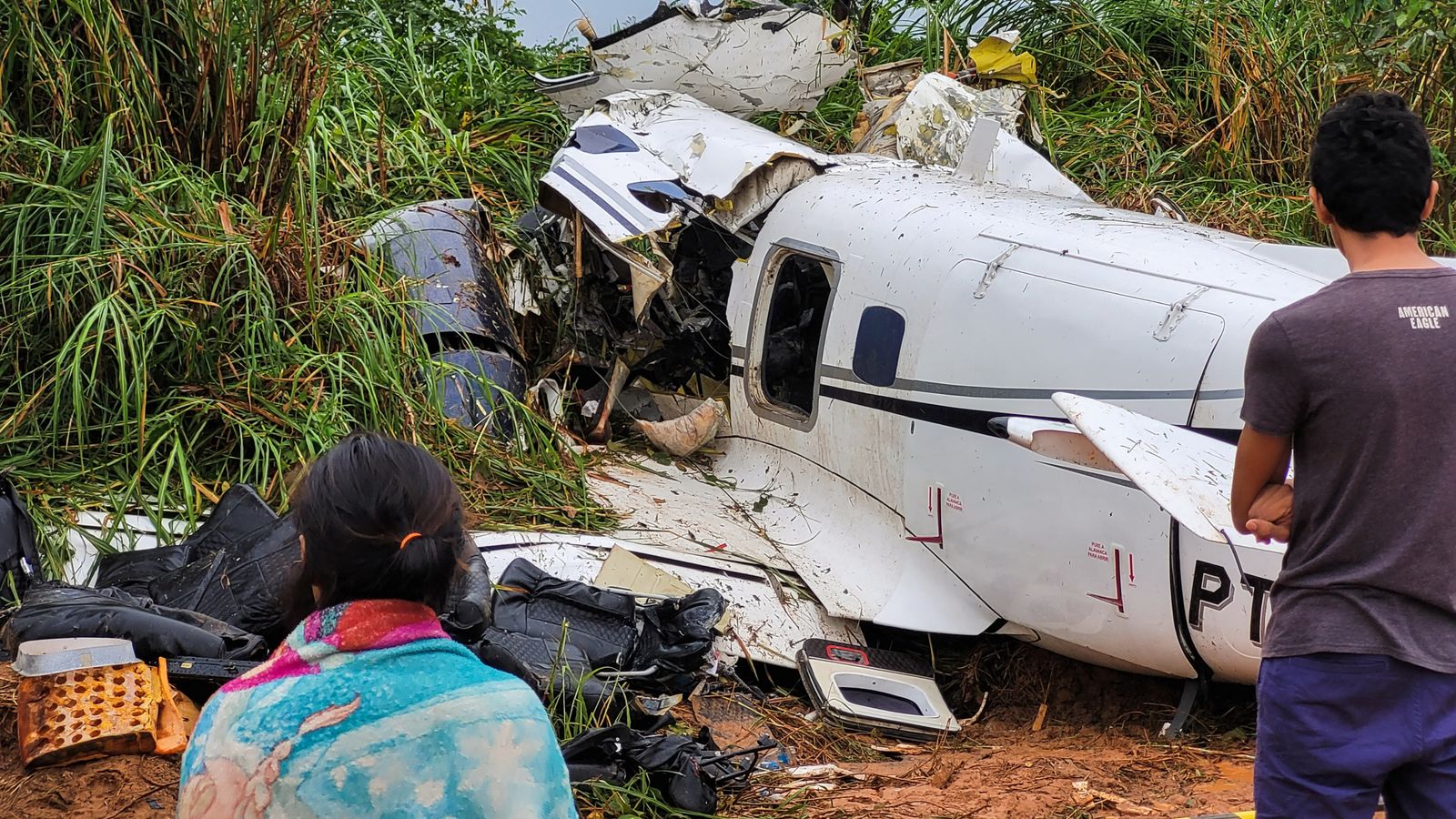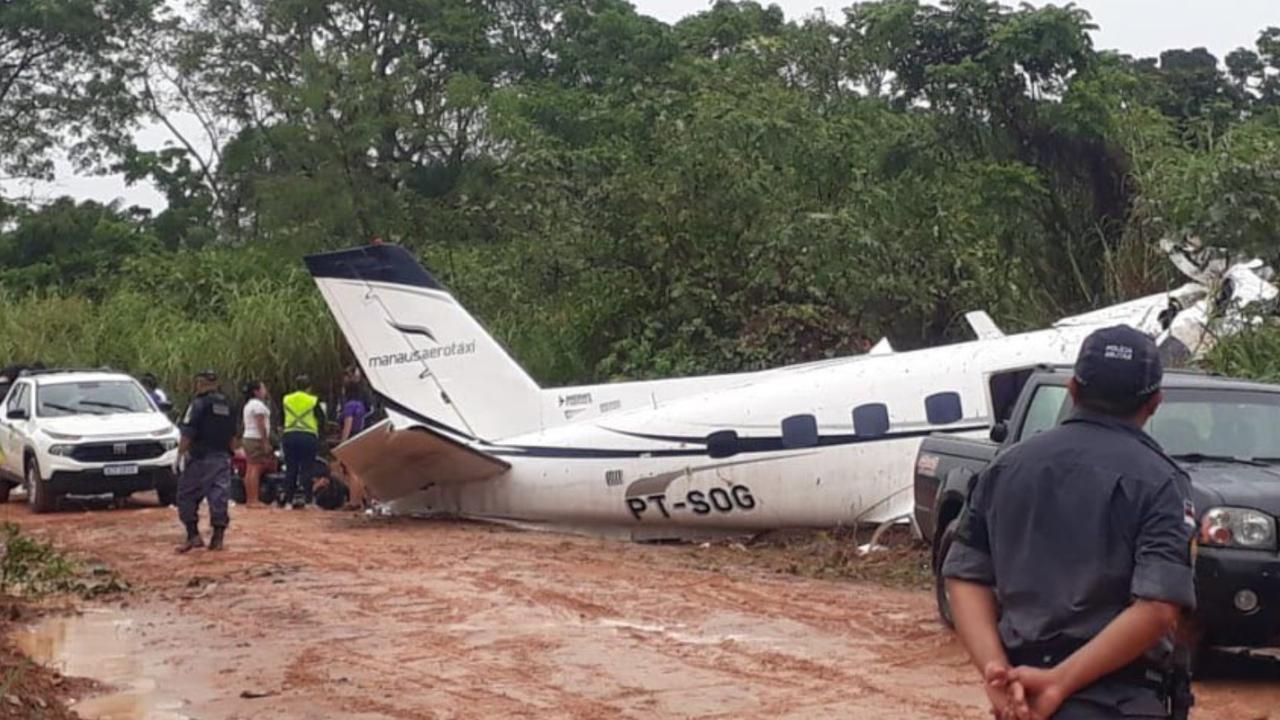Recent Plane Crashes in Brazil

Brazil has experienced a number of tragic plane crashes in recent years, resulting in significant loss of life and raising concerns about aviation safety in the country. Understanding the causes and trends of these crashes is crucial for improving safety measures and preventing future tragedies.
Timeline of Recent Plane Crashes in Brazil
This section provides a timeline of recent plane crashes in Brazil, highlighting the date, location, type of aircraft, and number of casualties. This information is crucial for understanding the scope and severity of aviation accidents in the country.
- Date: January 29, 2023
Location: Congonhas Airport, São Paulo
Type of Aircraft: Cessna 172
Casualties: 4 - Date: August 24, 2022
Location: Manaus, Amazonas
Type of Aircraft: Cessna 206
Casualties: 5 - Date: June 18, 2022
Location: Itaituba, Pará
Type of Aircraft: Cessna 206
Casualties: 3 - Date: May 29, 2022
Location: Carajás, Pará
Type of Aircraft: Boeing 737-800
Casualties: 1 - Date: April 16, 2022
Location: Goiânia, Goiás
Type of Aircraft: Cessna 172
Casualties: 2
Common Causes of Plane Crashes in Brazil
This section examines the common causes of plane crashes in Brazil, shedding light on the factors contributing to these tragic events. Understanding these causes is essential for developing effective safety measures and mitigating future risks.
- Pilot Error: Pilot error is a significant factor in many plane crashes, including those in Brazil. This can involve mistakes in judgment, improper handling of the aircraft, or failure to follow procedures.
- Mechanical Failure: Mechanical failure, such as engine problems, hydraulic system malfunctions, or structural defects, can also lead to plane crashes.
- Weather Conditions: Severe weather conditions, such as thunderstorms, heavy rain, or fog, can pose significant challenges to pilots and contribute to accidents.
- Air Traffic Control Errors: Errors by air traffic controllers, such as miscommunication or improper guidance, can also lead to accidents.
- Maintenance Issues: Inadequate maintenance or lack of proper inspections can result in mechanical problems that contribute to crashes.
Patterns and Trends in Plane Crashes in Brazil
This section analyzes any patterns or trends in plane crashes in Brazil, identifying areas of concern and potential solutions. Identifying these patterns is crucial for understanding the broader context of aviation safety in the country.
- Regional Variations: Some regions of Brazil, such as the Amazon rainforest, have higher rates of plane crashes than others. This is often due to challenging terrain, remote locations, and limited infrastructure.
- Type of Aircraft: Smaller aircraft, such as single-engine planes, are more prone to accidents than larger commercial jets. This is due to factors such as limited safety features and greater susceptibility to weather conditions.
- Safety Regulations: The effectiveness of safety regulations and enforcement can vary, contributing to inconsistencies in aviation safety standards across the country.
- Pilot Training: The quality of pilot training can also play a role in accident rates. Ensuring adequate training and ongoing professional development for pilots is crucial for maintaining high safety standards.
Impact of Plane Crashes on Brazilian Society

Plane crashes in Brazil have a profound impact on the country’s society, affecting not only the immediate victims and their families but also the broader economic and social fabric. The ripple effects of these tragedies extend far beyond the immediate aftermath, leaving lasting scars on various aspects of Brazilian life.
Economic Impact, Plane crash brazil today
Plane crashes can significantly impact Brazil’s economy in various ways. The loss of life often involves skilled professionals and entrepreneurs, resulting in a loss of human capital. This loss can disrupt businesses and industries, impacting productivity and economic growth. Additionally, the cost of investigations, rescue operations, and compensation for victims and families can place a substantial burden on the government and insurance companies.
- Loss of human capital: Plane crashes often claim the lives of skilled professionals and entrepreneurs, resulting in a loss of human capital. This loss can disrupt businesses and industries, impacting productivity and economic growth.
- Financial burden: The cost of investigations, rescue operations, and compensation for victims and families can place a substantial burden on the government and insurance companies.
- Tourism impact: Negative publicity surrounding plane crashes can deter tourists from visiting Brazil, impacting the tourism industry.
Social Impact
Plane crashes have a significant social impact on Brazilian society. The loss of life and the suffering of families create a sense of grief and collective trauma. Public trust in aviation safety can be shaken, leading to anxiety and fear among travelers. Furthermore, these events can fuel public debate and scrutiny of aviation safety regulations.
- Collective trauma: Plane crashes create a sense of grief and collective trauma, impacting the emotional well-being of the nation.
- Loss of trust: These events can shake public trust in aviation safety, leading to anxiety and fear among travelers.
- Public scrutiny: Plane crashes often spark public debate and scrutiny of aviation safety regulations.
Aviation Safety Regulations
Aviation safety regulations play a crucial role in mitigating the risk of plane crashes. Brazil has a robust regulatory framework, overseen by the National Civil Aviation Agency (ANAC). These regulations cover various aspects of aviation, including aircraft maintenance, pilot training, and airport infrastructure. However, challenges remain in ensuring strict adherence to these regulations and addressing safety concerns.
- ANAC: The National Civil Aviation Agency (ANAC) is responsible for overseeing aviation safety regulations in Brazil.
- Regulation scope: These regulations cover aircraft maintenance, pilot training, and airport infrastructure.
- Challenges: Ensuring strict adherence to regulations and addressing safety concerns remain ongoing challenges.
Impact on Tourism
Plane crashes can have a significant impact on Brazil’s tourism industry. Negative publicity surrounding these events can deter tourists from visiting the country, leading to a decline in visitor numbers and revenue. This impact can be particularly severe for destinations heavily reliant on air travel.
- Negative publicity: Plane crashes can deter tourists from visiting Brazil, leading to a decline in visitor numbers and revenue.
- Destination impact: The impact can be particularly severe for destinations heavily reliant on air travel.
Global Perspective on Plane Crashes: Plane Crash Brazil Today
Plane crashes are tragic events that impact not only the families and communities of the victims but also the global aviation industry. It is essential to understand the global context of plane crashes, examining their frequency, impact, and the role of international organizations in promoting safety.
Comparison of Plane Crash Frequency in Brazil to Other Countries
The frequency of plane crashes varies significantly across countries. Factors such as the size of the aviation industry, regulatory standards, and geographic conditions can influence the number of accidents.
- While Brazil has a relatively large aviation industry, it also experiences a higher number of plane crashes compared to other developed nations. This is often attributed to a combination of factors including challenging terrain, diverse weather conditions, and a mix of modern and older aircraft.
- However, it is important to note that the number of crashes per million passengers flown is often a more accurate measure of safety. In this metric, Brazil’s performance has been improving in recent years, indicating progress in safety standards.
- Countries like the United States, Canada, and the European Union generally have lower crash rates due to stricter regulations, robust safety protocols, and a high level of technological advancement in their aviation sectors.
Global Impact of Plane Crashes on the Aviation Industry
Plane crashes have a profound impact on the global aviation industry, affecting passenger confidence, airline profitability, and the development of safety regulations.
- Following a major crash, there is often a decrease in passenger confidence, leading to a drop in travel demand. This can result in financial losses for airlines and impact the overall profitability of the industry.
- Crashes also trigger investigations and safety audits, leading to new regulations and safety protocols. These changes aim to prevent similar accidents in the future, but they can also increase operating costs for airlines.
- The global aviation industry works collaboratively to share information and best practices to improve safety. This includes the development of international standards, training programs, and technological advancements.
Role of International Organizations in Aviation Safety
International organizations play a crucial role in promoting aviation safety by setting standards, conducting research, and providing technical assistance to countries around the world.
- The International Civil Aviation Organization (ICAO) is a specialized agency of the United Nations responsible for establishing international standards and recommended practices for civil aviation. Its goal is to ensure the safe and orderly development of international civil aviation.
- The European Aviation Safety Agency (EASA) is a regulatory body responsible for aviation safety in the European Union. It sets safety standards, conducts audits, and promotes research and development in aviation safety.
- The International Air Transport Association (IATA) is a trade association representing airlines worldwide. It promotes safe and efficient air travel through the development of industry best practices and safety standards.
Plane crash brazil today – While the world mourns the tragic plane crash in Brazil today, it’s a stark reminder of the fragility of life. In contrast, the political landscape in the United States is currently focused on the upcoming presidential election, with events like the fox presidential debate taking center stage.
These events, while seemingly worlds apart, both highlight the importance of safety and the power of human connection, reminding us of the value of life in all its forms.
News of a plane crash in Brazil today raises questions about safety protocols and the complex interplay of human and mechanical factors. This incident, like many others, highlights the need for robust investigation and analysis, an approach exemplified by the fox debate , which explores the intricacies of knowledge acquisition and its limitations.
By understanding the limitations of human perception and the fallibility of technology, we can strive to improve aviation safety and prevent future tragedies.

